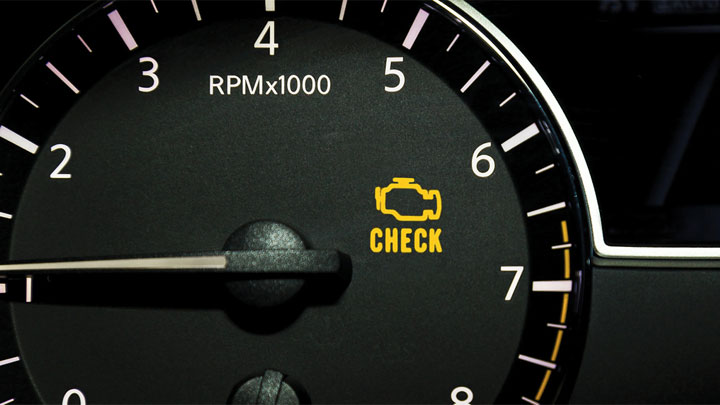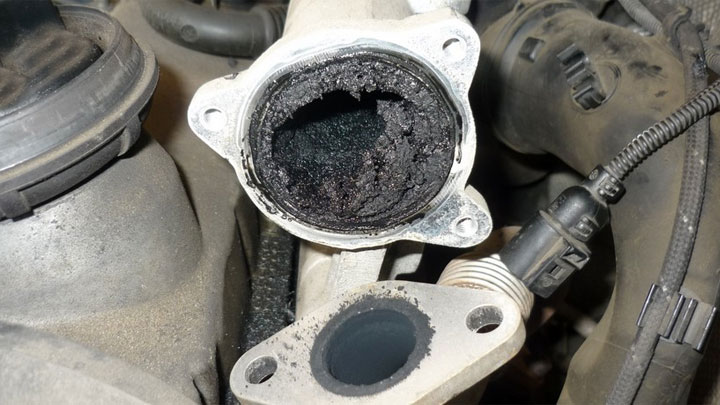P0403 Code (Symptoms, Causes, and How to Fix)
When you start up your vehicle the last thing you want to see is a check engine light. But if you own a vehicle long enough, eventually it’s going to happen.
Once you read the code, it’s time to go about fixing the underlying problem. But what exactly does a code P0403 mean, how is it triggered, and how do you fix it when it does come up? We’ll answer that and more here.

What Does Code P0403 Mean?
If you don’t know too much about vehicles, a P0403 engine code description is one of those things that really doesn’t clear much up for you. In short, the exhaust gas recirculation (EGR) system takes exhaust from the tailpipe and cycles it back into the combustion chamber.
Not only does this reduce the number of harmful emissions by double burning them and reducing the temperature of the combustion chamber, but it also improves fuel efficiency and has some performance benefits.
A code P0403 tells you there’s something wrong with the EGR system, and it isn’t working the way it should.
Related Codes: P0400, P0401, P0402, P0404, P0405
Symptoms of Code P0403

If you’re looking for noticeable symptoms of a code P0403, chances are the check engine light is the only thing you’re going to see. Typically, there are no adverse conditions that the driver will notice if the EGR system isn’t working the way it should.
However, sometimes you’ll notice an engine pinging during acceleration, during heavy engine workloads, or when traveling at higher speeds. While this condition is rare, if you do notice it you need to take your vehicle to a mechanic straight away.
While there are no noticeable symptoms of a code P0403 in most cases, you will fail an emissions test if you need one and this code is active.
- Check engine light
- No noticeable conditions
- Pinging on acceleration or at higher speeds
Causes of Code P0403

A code P0403 certainly points you in the direction of the EGR system, but from there it’s up to you to figure out what the exact problem is.
Potential causes include restricted EGR passages from excessive carbon build-up, a defective EGR valve, a defective EGR solenoid, a loss of vacuum, or an electrical problem between the EGR and one of the computer systems.
That’s a lot of potential causes, and without further troubleshooting, it’s impossible to figure out what’s going on and how to fix it.
- Defective EGR solenoid
- Defective EGR valve
- Restricted EGR passages
- Lack of proper vacuum or electrical signal
Is Code P0403 Serious?
Compared to many other engine codes, a P0403 is not very serious. However, just because it’s not one of the most serious engine codes doesn’t mean you shouldn’t go get it checked out and fixed as soon as possible.
First, while the problem isn’t all that serious at first, it can lead to higher temperatures inside the combustion chamber. Over time this can lead to premature failures.
Second, it’s hiding any other potential codes that might come up. If the check engine light is on for a code P0403, there’s no way for it to let you know that there’s a serious check engine light.
Finally, there’s a reason your vehicle has an EGR system. It does a great job of reducing harmful emissions, and that’s a big deal for the planet. If that’s not what you care about, EGR systems help improve your vehicle’s fuel efficiency, saving you some money at the pump.
How to Fix

If you don’t have an automotive scan tool, you are kind of troubleshooting in the dark here. Still, we’ll walk you through some of the basics to see if you can’t get your vehicle back up and running without taking it to a mechanic.
The first thing you can do is remove the EGR valve and try to clean it out. While a full-induction service is the most effective option for this when you remove the EGR you can use a regular carb and choke cleaner to try and get things cleared out.
It’s all about removing as much carbon build-up as possible. If that doesn’t fix the problem for you, test the vacuum line and electrical system.
This guide will run you through everything you need to know to test the vacuum system and help you fix it.
While you can’t check the entire electrical system without an automotive scan tool, you can check for power at the valve. Look for 12 volts coming from one wire at the solenoid and 5 volts coming from the other. The voltages don’t have to be exact, but they should be pretty close.
From there it’s up to you to decide if the problem is the EGR valve or the solenoid. It could be either one, but if the EGR looks like it’s in good condition, and if you can verify the diaphragm moves, then the problem is likely the solenoid.
- P0521 Code (Symptoms, Causes, How to Fix) - Mar 22, 2024
- How to PROPERLY Clean 5 Types of Steering Wheel Materials - Feb 19, 2024
- What Should You Do If Your Check Engine Light Comes On? - Nov 6, 2023
